
Ambient music is a genre of music that emphasizes tone and atmosphere over traditional musical structure or rhythm. It may lack net composition, beat, or structured melody. It uses textural layers of sound that can reward both passive and active listening and encourage a sense of calm or contemplation. The genre is said to evoke an "atmospheric", "visual", or "unobtrusive" quality. Nature soundscapes may be included, and the sounds of acoustic instruments such as the piano, strings and flute may be emulated through a synthesizer.
Ambient techno is a subgenre of techno that incorporates the atmospheric textures of ambient music with the rhythmic elements and production of techno. It was pioneered by 1990s electronic artists such as Aphex Twin, Carl Craig, The Orb, The Future Sound of London, the Black Dog, Pete Namlook and Biosphere.

Albert Allick Bowlly was a South African-British vocalist and dance band guitarist who was popular during the 1930s in Britain. He recorded upwards of 1,000 songs.
The Caretaker was a long-running project by English ambient musician James Leyland Kirby. His work as the Caretaker is characterized as exploring memory and its gradual deterioration, nostalgia, and melancholia. The project was inspired by the haunted ballroom scene in the 1980 film The Shining. His first several releases comprised treated and manipulated samples of 1930s ballroom pop recordings. Most of his album covers were painted by one of his friends, Ivan Seal.
The St Luke Passion, BWV 246, is a Passion setting formerly attributed to Johann Sebastian Bach. It is included in the BWV catalog under the number 246. Now it appears in the catalogues under the heading apocryphal or anonymous.

Sick-Love is the debut remix album by V/Vm, an alias of English musician Leyland Kirby. Released in 2000, it samples and distorts several 1980s pop songs about love, distorting them to create a sinister atmosphere. The album is mostly unavailable physically because of copyright laws; V/Vm later released the similar album The Green Door. Met with a positive reception from music critics, the album and its single received airplay on various radio stations, achieving the NME title of single of the week.
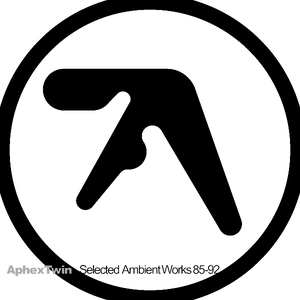
Selected Ambient Works 85–92 is the debut studio album by Aphex Twin, the pseudonym of the British electronic music producer and DJ Richard D. James. It was released on 9 November 1992 through Apollo Records, a subsidiary of the Belgian label R&S Records. The album consists of ambient techno tracks recorded onto cassette reputedly dating as far back as 1985, when James was 13 to 14 years old. On release, it received widespread acclaim. It entered the UK Dance Albums Chart at No. 6 on 26 December 1992.
Ivan Seal is an English painter and sound artist who specializes in surreal and abstract works centered around concepts of memory and the creation of imagined objects. He is best known for his collaborations with electronic musician James Leyland Kirby, also known as The Caretaker, creating artwork for the critically acclaimed albums: An Empty Bliss Beyond This World and the six part album series Everywhere at the End of Time, both of which examine themes of memory loss through the long-term mental decay brought about by dementia.
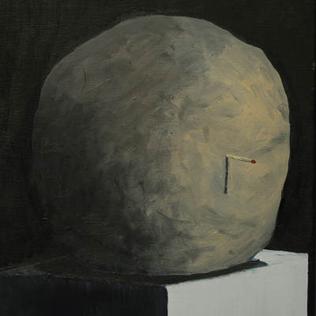
An Empty Bliss Beyond This World is the ninth studio album by the Caretaker, an ambient music project of English musician Leyland Kirby, released on 1 June 2011 through History Always Favours the Winners.
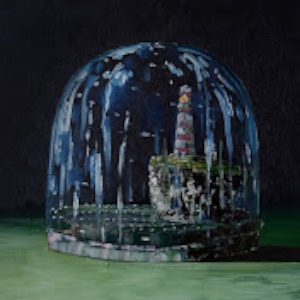
The soundtrack for Patience (2012), a film by Grant Gee, was composed and produced by English musician Leyland James Kirby under his ambient music project the Caretaker. The official soundtrack album was issued on 23 January 2012. Unlike other albums of the Caretaker that used old recordings of playful and bright ballroom music, Kirby's score for the film uses a 1927 recording of Franz Schubert's song cycle for voice and piano Winterreise (1828) as its main audio source. It also differs from other works of the project where hissing sounds are used instead of crackles, the loops are shorter in lengths, and the non-musical aspects of each track serve as the foreground of the mix. The soundtrack was favorably received by professional music journalists.
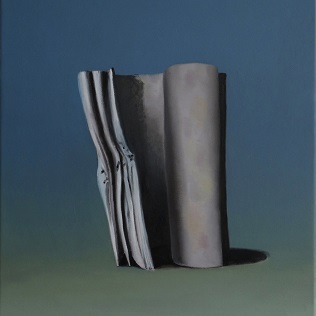
Everywhere at the End of Time is the eleventh recording by the Caretaker, an alias of English electronic musician Leyland Kirby. Released between 2016 and 2019, its six studio albums use degrading loops of sampled ballroom music to portray the progression of Alzheimer's disease. Inspired by the success of An Empty Bliss Beyond This World (2011), Kirby produced Everywhere as his final major work under the alias. The albums were produced in Kraków and released over six-month periods to "give a sense of time passing", with abstract album covers by his friend Ivan Seal. The series drew comparisons to the works of composer William Basinski and electronic musician Burial, while the later stages were influenced by avant-gardist composer John Cage.
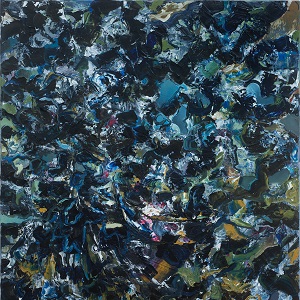
Everywhere, an Empty Bliss is the twelfth release by the Caretaker, an alias of English musician Leyland Kirby. Released on February 26, 2019, the record is compiled from archived tracks that were meant to be used on the Caretaker's albums. Before finishing his album series Everywhere at the End of Time, Kirby released the album as "a surprise golden farewell". It is the first album under the Caretaker alias to feature easily audible lyrical content since 2003's We'll All Go Riding on a Rainbow.

We, So Tired of All the Darkness in Our Lives is the seventh studio album by English musician Leyland Kirby, released on 28 September 2017. An electronic album, it features melancholic and gothic elements. It was produced the same time as Stage 4, and released the same day as Stage 3, of Kirby's album series under the Caretaker moniker, Everywhere at the End of Time. We, So Tired of All the Darkness in Our Lives contrasts from the Caretaker's work in that it is more positive; aspects such as drums mimicking a sound of marching are present. The album's title is a reference to the Joe Jackson song Steppin' Out.
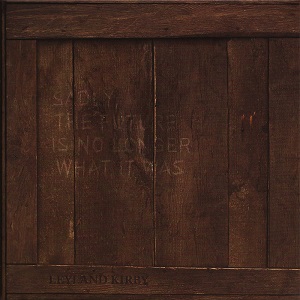
Sadly, the Future Is No Longer What It Was is the debut studio album by English musician Leyland Kirby, released on 1 September 2009. With his ongoing aliases at the time, Kirby produced a melancholic album that explored thoughts of the future. He produced Sadly at an agitated time, when he would not work but rather drink with various girls. The record was first issued as three full-length CDs and would later be repressed as six vinyls with artwork by Ivan Seal. The release received moderately positive reception from music critics. Some criticized its length, while others praised its emotional sound.

We'll All Go Riding on a Rainbow is the third studio album by the Caretaker, an alias of musician Leyland Kirby. Released in 2003, it was the last of Kirby's "haunted ballroom trilogy", which spans his albums influenced by the film The Shining. It features looped melodies and vinyl crackle to create the ambience of The Shining's ballroom, with its artwork emphasizing this style. We'll All Go Riding on a Rainbow was met with positive reception from music critics, who praised its haunted ballroom ambiance. However, other critics felt that the album's length was an issue. Kirby's next album as the Caretaker, Theoretically Pure Anterograde Amnesia (2005) would abandon the haunted ballroom concept and install themes of memory loss.

A Stairway to the Stars is the second studio album by the Caretaker, an alias of musician Leyland Kirby. Released in 2001, it was created after one of Kirby's pop manipulations as V/Vm gained attention. Following Selected Memories from the Haunted Ballroom, A Stairway to the Stars features new genres such as darkwave and elements such as reversed vocals. The record was met with positivity from music critics, who praised its ambiance. It is regarded as Kirby's best album in his haunted ballroom trilogy, which spans his first three releases.

Persistent Repetition of Phrases is the seventh studio album by the Caretaker, an alias of musician Leyland Kirby. Released on 1 April 2008, it was his first record to cover themes of Alzheimer's disease. The album was also the first Caretaker release to present looping of short segments within tracks. It marked Kirby's change of record labels from V/Vm Test to History Always Favours the Winners, which he felt might have helped with the record's success.

Take Care. It's a Desert Out There... is the eleventh studio album by the Caretaker, an alias of musician Leyland Kirby. Released on 8 December 2017, Kirby composed it after the death of his collaborator, Mark Fisher, who died by suicide on January 13, 2017 at age 48. Consisting of a single title track throughout its 48-minute runtime, its proceeds would be donated to the mental health charity Mind. Kirby's initial intention would be to give the record to attendants of his performance at the Barbican Hall in London. However, due to a high demand, he decided to release it on his YouTube channel.
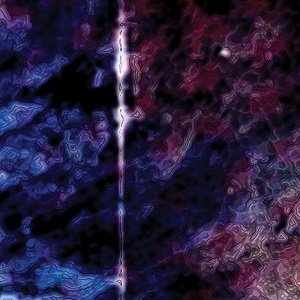
Theoretically Pure Anterograde Amnesia is the fourth studio album by the Caretaker, an alias of musician Leyland Kirby. Released in 2005, it abandoned the haunted ballroom aesthetic of the previous albums and explored memory loss. Divided into six CDs, it consists of seventy-two drone tracks combined to create a five-hour long release. It was compared by several critics to other musicians, including Merzbow, Boards of Canada, and Krzysztof Penderecki.

Eager to Tear Apart the Stars is the second studio album by English electronic musician Leyland Kirby, released on 3 October 2011. Following his own name debut album Sadly, the Future Is No Longer What It Was, Kirby continued exploring a more personal side of his music, though one that differs from his work as the Caretaker. Kirby produced the songs without using any samples, mostly creating piano tracks from synthesisers. This style of sound drew comparisons to the work of composers Harold Budd and Roedelius, though the record's press release claimed Kirby has his own oeuvre.

















